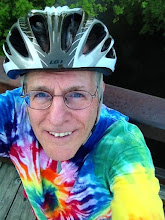What is the drug problem?
Seeing it as a crime problem means that it has criminological and criminal justice roots and solutions. The analysis uses criminal justice conventions. The experts are criminal justice experts.
Seeing it as a public health problem means that it has public health roots and solutions. The analysis uses public health conventions. The experts are public health experts.
Seeing it as a problem of human liberty means that it has roots in liberty and oppression. The analysis uses the conventions of human rights. The experts are experts in rights: lawyers and philosophers.
Of course, the drug problem is a collection of problems. The problems and solutions are in tension with each other. The expert in a single dimension of the problem is important, but given exclusive deference, and not balanced with other expertise, risks presenting an unbalanced analysis.
Consider the tension between criminal justice and public health for a moment. Criminal justice (with the exception of genuine community-oriented policing) has traditionally and habitually been case oriented. Offenders are typically individual offenders. It is the individual's wrongful acts and culpability that trigger a case: an investigation into a crime, a prosecution of a case, the sentencing (punishment) of an offender. Offenders commonly violate community norms. Traditional offenses directly, intentionally or recklessly harmed victims through violence or other injury. Thus there is a long association of the use of force and coercion to apprehend and control offenders. The use of force in criminal justice is typically axiomatic and unquestioned, indeed, it is unconsciously inherent.
In public health, the focus is typically upon a community: a population or subpopulation. And the goal is typically the reduction of the incidence of disease in the population. Rarely is the goal the complete eradication of the disease because there is a recognition of the ecological nature of infectious agents: they live and spread in the population due to the generally common behaviors of the population (living, studying or working in the same environment -- breathing the common air; consuming food and water from common sources).
In public health, the use of force is not inherent. The legitimacy of the use of force for public health has waxed and waned. During epidemics force was used to enforce quarantine and to take other measures. Mass inoculation has been accompanied by threats of coercion.
Modern public health has incorporated a much less tolerant view toward coercion. Coercion is, if acceptable, reserved as a last resort in support of an intervention. In criminal justice, the application or imminent threat of coercion is one of the primary elements of intervention.
Imagine, imagine, imagine that drug problems were primarily understood, analyzed, debated, and acted upon in public health terms. What would the drug problem look like after ten years, twenty years, thirty years in which the leadership of drug policy making, commentary and oversight were men and women trained and experienced in public health -- from the White House to the street. Imagine that instead of hundreds of thousands of police officers involved in "drug enforcement" there were hundreds of thousands of public health workers involved in "drug harm reduction."
The goal and measure of success in public health is the decrease in health risks. With those goals in place for twenty years, and the public and private organizations charged with addressing the drug phenomenon assessed primarily on the reduction of health risks (including the association of violence with drug use and drug distribution), what would our drug policies look like? What would our drug problem look like?
Tuesday, April 25, 2006
The danger of misunderstanding the "problem"
Subscribe to:
Post Comments (Atom)





No comments:
Post a Comment